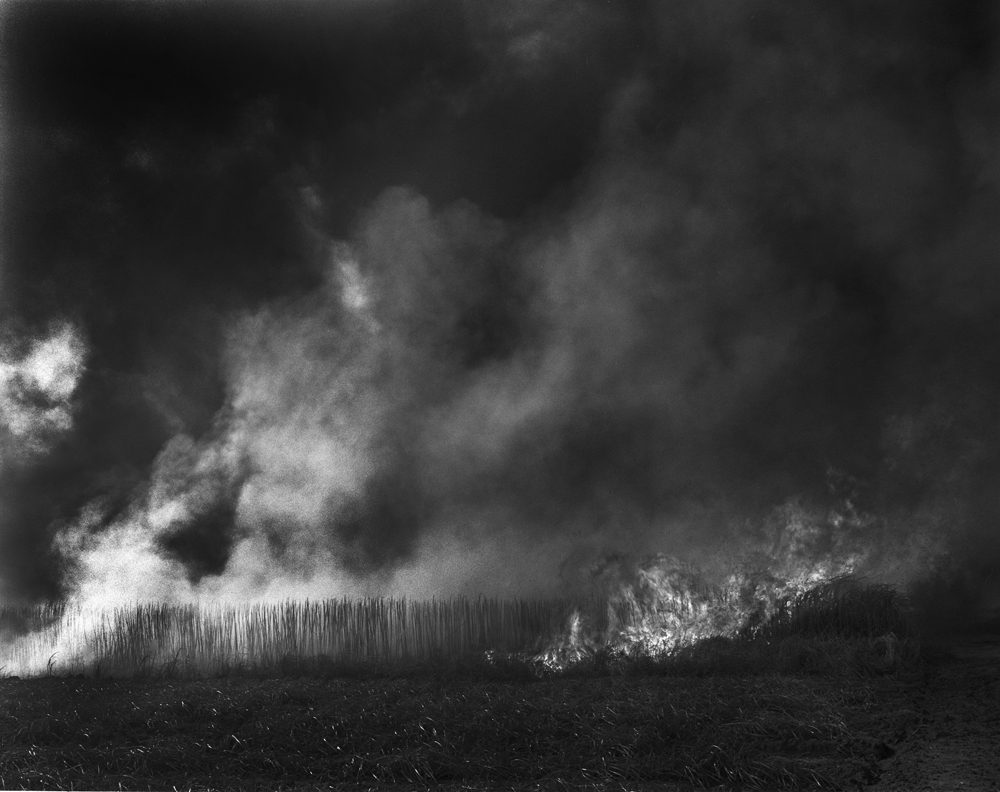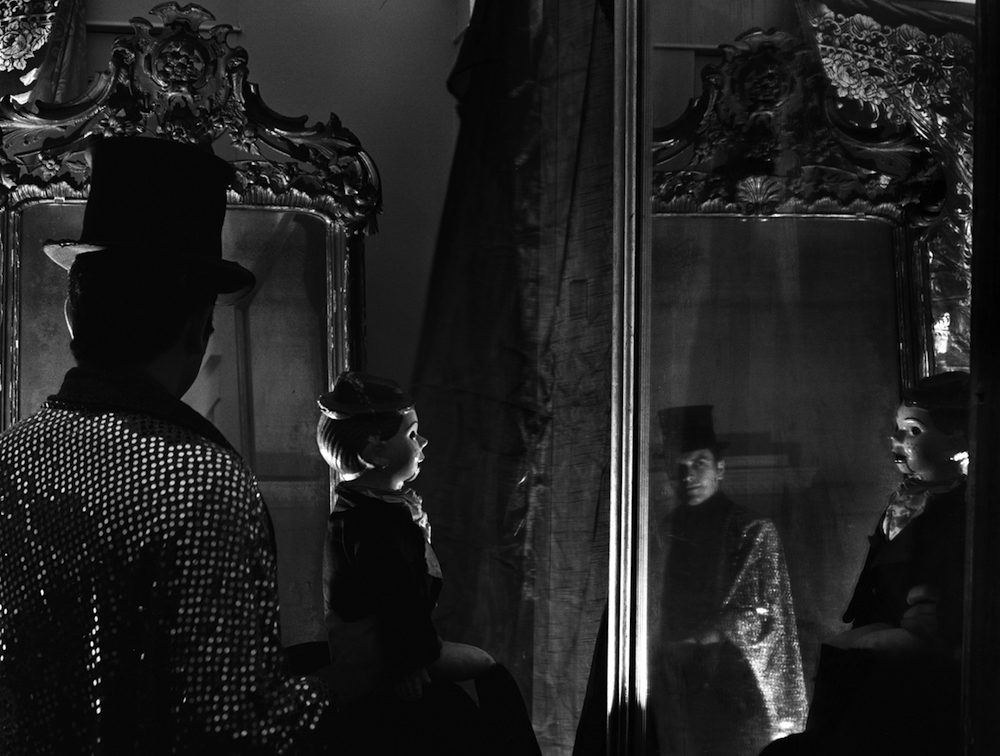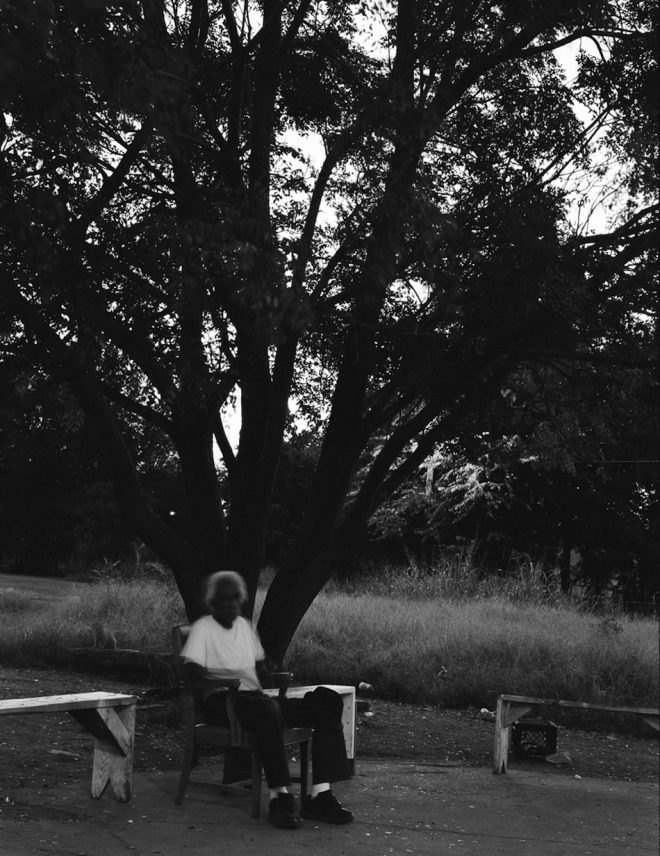The In-Between: Debbie Fleming Caffery at Octavia Art Gallery
Brooke Sauvage visits Debbie Fleming Caffery's photography exhibition at Octavia Art Gallery.

Debbie Fleming Caffery, Burning Cane #6, 2006. Gelatin silver print. Courtesy the artist and Octavia Art Gallery, New Orleans.
Debbie Fleming Caffery
Octavia Art Gallery
454 Julia Street
April 11 - May 23, 2015
Debbie Fleming Caffery’s black-and-white photography, at its most basic, is about contrast. In “Southern Work,” her poignant rendering of the Mississippi Delta, Caffery portrays Southern landscapes and their stewards. Known for her depiction of the sugar cane harvest since the 1970s, Caffery’s agricultural images here are dominated by strong lines, clouds, and smoke. Burning Cane #6, 2006, shows fire steadily consuming a row of sugar cane plants silhouetted against a dark, cloudy sky, with smoke billowing into the ether. The scene encapsulates the destruction that will, one hopes, engender fertile soil for the next harvest. Though part of a common end-of-season practice, the enduring impression left by the image is nearly apocalyptic. Enterprise Mill, Sunrise, 2009, incorporates similar imagery insofar as a plume of sunlight parts the dark clouds that cloak the surrounding mill infrastructure, prompting viewers to speculate which will triumph: light or dark, nature or industry.
Beyond obfuscating her subjects with smoke and clouds, Caffery deploys reflections to blur our perception of accepted binaries. A particularly intriguing photo, Ventriloquist, 2013, portrays a man practicing with a dummy before a mirror. Her subject’s doubleness—the man and the doll, manipulator and manipulated—is then quadrupled in the mirror’s reflection. With his back to the frame, the man’s jacket, adorned with miniature sequins, magnifies the effect, further splitting the image between front and back, substance and illusion. Caffery seems to ask: What in the photograph can be trusted?

Debbie Fleming Caffery, Ventriloquist, 2013. Gelatin silver print. Courtesy the artist and Octavia Art Gallery, New Orleans.
This issue of trust in Caffery’s work is an important one. While the artist is white, many of her subjects are people of color, often agricultural laborers with whom she’s built relationships over the years photographing in the region. Distortion figures in her portraits of them in much the same way that clouds, smoke, and reflections do in her pictures of landscapes and other scenes—as disruptions. In The Tree of Knowledge, 2014, a dark-skinned man in a white t-shirt sits at the base of a large tree, whose branches fan out into the uppermost corners of the frame. His face is blurred and indistinct, and his body aligns with the base of the tree’s trunk. Against the comparatively dark background, his bright white t-shirt becomes the image’s focal point. The faceless man with dark skin and the white shirt up against the Tree of Knowledge seems to challenge the myth behind the titular symbol, asking viewers to reexamine their assumptions in terms of black and white, good and evil, powerful and powerless.
By embracing contradictions, Caffery proffers a type of transcendence in her vision of the Mississippi Delta. From brutal images of the sugar cane harvest to emotive portraits of its stewards, Caffery’s “Southern Work" engages the middle ground between perceived opposites to suggest a more fruitful, thoughtful alternative.

Debbie Fleming Caffery, The Tree of Knowledge, 2014. Gelatin silver print. Courtesy the artist and Octavia Art Gallery, New Orleans.



